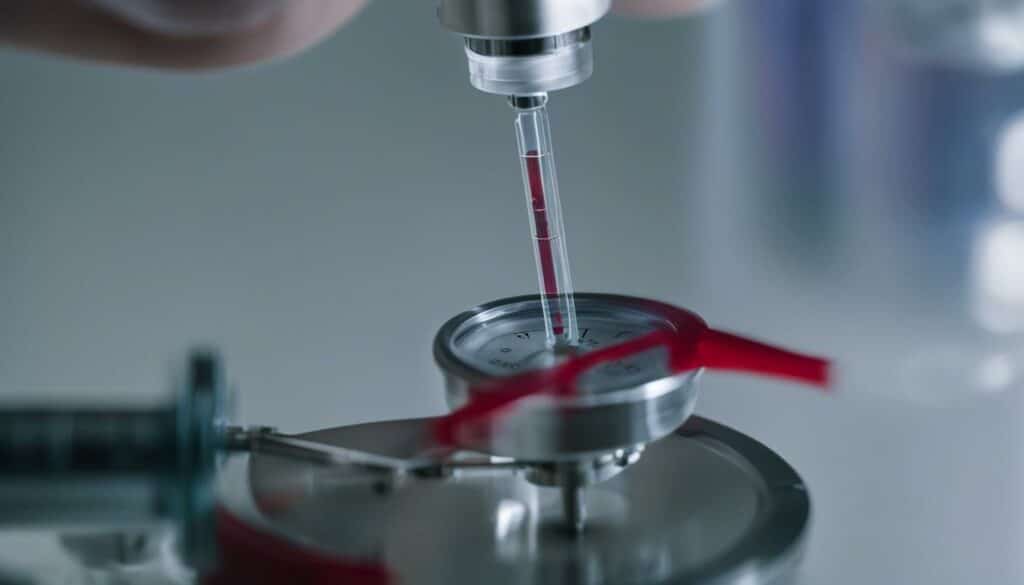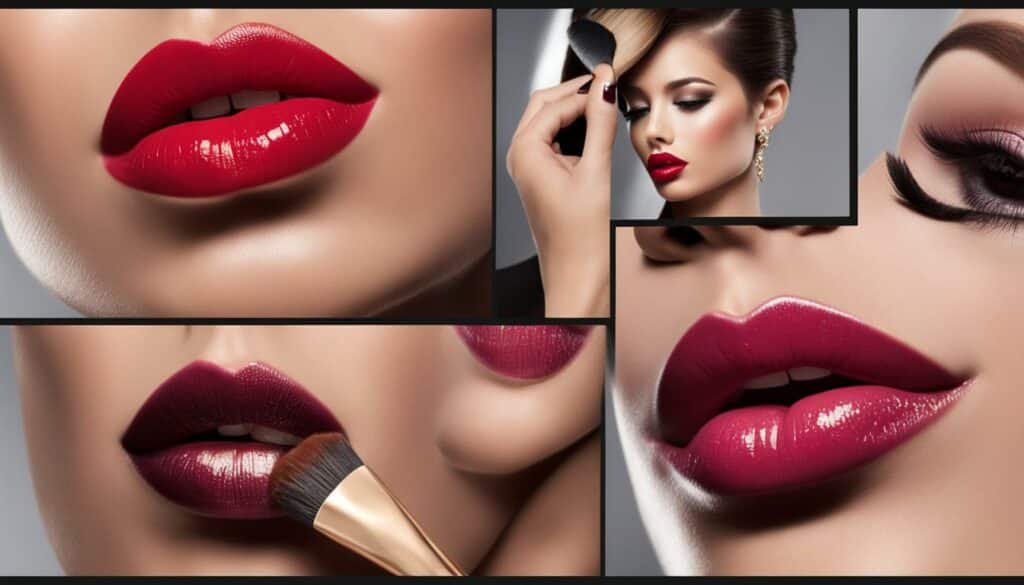Dermal fillers are gel-like substances injected beneath the skin to restore lost volume, smooth lines, and enhance facial contours. They can address various concerns such as lines around the nose and mouth, sunken cheeks, and chin creases. There are different types of fillers made with substances like hyaluronic acid, calcium hydroxylapatite, and more. The choice of filler depends on the specific concern and desired outcome. The results of fillers typically last 6 to 24 months, depending on the type of filler used and individual factors. It is recommended to consult with a qualified provider for personalized advice on the frequency of filler maintenance and touch-ups.
Key Takeaways:
- Fillers are gel-like substances injected beneath the skin to restore lost volume and enhance facial contours.
- The duration of fillers varies depending on the type of filler used, lasting from 6 to 24 months.
- Consulting with a qualified provider is essential to determine the recommended frequency of filler maintenance and touch-ups.
- There are different types of fillers made with substances like hyaluronic acid and calcium hydroxylapatite.
- Individual factors, such as the body’s metabolic rate, can influence the longevity of fillers.
What Are Injectable Dermal Fillers Made Of?
Dermal fillers are injectable substances that are used to address various concerns such as restoring lost volume, smoothing lines, and enhancing facial contours. Different types of dermal fillers are made with various substances to achieve different desired outcomes.
Hyaluronic acid fillers: These fillers, such as Juvéderm and Restylane, use a naturally occurring substance in the skin to add volume and improve hydration.
Calcium hydroxylapatite fillers: Fillers like Radiesse utilize a compound found in bones for longer-lasting results.
Poly-L-lactic acid fillers: These fillers, like Sculptra, stimulate collagen production for a gradual improvement in volume.
Polymethylmethacrylate fillers: Bellafill is an example of a filler that provides permanent results by using a synthetic substance.
Fat injections: This technique involves harvesting fat from the patient’s body and injecting it into the desired area for a natural, long-lasting filler.
| Type of Dermal Filler | Main Substance |
|---|---|
| Hyaluronic acid fillers | Hyaluronic acid |
| Calcium hydroxylapatite fillers | Calcium hydroxylapatite |
| Poly-L-lactic acid fillers | Poly-L-lactic acid |
| Polymethylmethacrylate fillers | Polymethylmethacrylate |
| Fat injections | Harvested patient’s fat |
Each type of dermal filler has its own unique properties and benefits. It is important to consult with a qualified provider to determine the most suitable filler for your specific concerns and desired outcome.
Choosing a Qualified Provider for Fillers
When it comes to getting fillers, choosing the right provider is crucial for achieving safe and satisfactory results. Whether you’re considering hyaluronic acid fillers, calcium hydroxylapatite fillers, or any other type of dermal filler, it’s important to find a qualified professional who has the necessary expertise and experience.
A board-certified cosmetic surgeon is an excellent choice for performing filler injections. These surgeons have undergone extensive training and are well-versed in facial anatomy, ensuring precise placement and minimizing the risk of complications. They also possess an aesthetic eye, allowing them to create natural-looking results that enhance your features.
Another option is an experienced injector who works closely with a qualified physician. Registered nurses or physician’s assistants who specialize in injectables can provide excellent results when working under the supervision of a board-certified cosmetic surgeon. If you choose this route, be sure to inquire about their level of experience and ask to see before and after photos of their previous work.
By selecting a provider who is knowledgeable, skilled, and experienced, you can have peace of mind knowing that your filler treatment is in capable hands. Remember to prioritize your safety and satisfaction when making your decision, and consult with a qualified professional to discuss your aesthetic goals and determine the best approach for your specific needs.
How Long Do Fillers Last?
When considering dermal fillers, one of the important factors to consider is how long the results will last. The longevity of fillers can vary depending on the type of filler used, with temporary and permanent options available.
Hyaluronic acid fillers, which are a popular choice for adding volume and reducing the appearance of wrinkles, typically last between 6 to 18 months. These fillers are gradually broken down by the body, so touch-up treatments will be necessary to maintain the desired results.
On the other hand, permanent fillers, such as polymethylmethacrylate fillers, offer results that can last indefinitely. These fillers provide a long-lasting solution but require careful consideration as they are not reversible.
“The duration of fillers varies depending on the type of filler used, with temporary fillers lasting 6 to 18 months and permanent fillers providing indefinite results.”
To determine the best filler option for you and to create a personalized maintenance plan, it is recommended to consult with a qualified provider. They will be able to assess your individual needs, discuss your goals, and recommend the most suitable filler type and maintenance schedule.

Overall, the duration of fillers depends on various factors and can vary from person to person. Following aftercare instructions and maintaining a healthy lifestyle can also help maximize the lifespan of fillers and support long-lasting results.
Lip Fillers: Achieving and Maintaining Your Dream Lips
When it comes to lip enhancement, lip fillers, also known as dermal fillers for lips, have become a popular choice for achieving fuller and more defined lips. The lip filler procedure involves the strategic injection of a filler substance into the lips to add volume and enhance their shape. This non-surgical treatment can provide natural-looking results and is customizable to suit individual preferences.
The longevity of lip fillers can vary depending on factors such as the type of filler used and individual metabolism. Typically, lip fillers can last between 6 to 18 months. Hyaluronic acid-based fillers, such as Juvéderm and Restylane, are commonly used for lip augmentation due to their ability to provide natural-looking results and the option of reversibility. However, it’s essential to consult with a qualified provider to determine the most suitable filler and frequency of touch-ups for achieving and maintaining your dream lips.

Benefits of Lip Fillers
- Enhanced Volume: Lip fillers can add fullness and volume to thin lips, helping to achieve a more balanced and youthful appearance.
- Improved Definition: Fillers can enhance the lip contour, defining the shape and creating a more aesthetically pleasing appearance.
- Reduced Fine Lines: Lip fillers can smooth out vertical lip lines, also known as smoker’s lines, for a more youthful and rejuvenated look.
- Natural-Looking Results: With the right technique and the use of appropriate fillers, lip augmentation can provide subtle and natural-looking results.
It’s important to note that the results of lip fillers are not permanent, and maintenance appointments may be required to uphold the desired look. Following the recommended aftercare instructions provided by your provider, such as avoiding strenuous activity and extreme temperatures, can help ensure optimal healing and prolong the longevity of your lip fillers.
| Lip Filler Type | Duration |
|---|---|
| Hyaluronic Acid Fillers | 6 to 18 months |
| Calcium Hydroxylapatite Fillers | Up to 1 year |
| Poly-L-lactic Acid Fillers | Up to 2 years |
| Polymethylmethacrylate Fillers | Permanent results |
Lip Filler Aftercare
Proper aftercare is crucial for optimal healing and maintaining the results of lip fillers. Follow these post-procedure instructions to ensure a smooth recovery:
- Avoid touching or massaging the treated area for at least 24 hours to prevent moving the filler.
- Limit the use of makeup on the lips for the first day after the procedure to allow the filler to settle.
- Stay hydrated by drinking plenty of water to promote healing and maintain skin elasticity.
- Ice the area intermittently for the first 24 hours to reduce swelling and discomfort. Use a clean cloth or ice pack wrapped in a thin towel.
- Avoid strenuous physical activity, such as intense exercise and heavy lifting, for at least 24 hours to minimize swelling and bruising.
- Avoid exposure to extreme hot or cold temperatures, such as saunas, hot baths, and very cold weather, as they can affect the healing process.
Following these aftercare instructions will help ensure a successful lip filler healing process and maximize the longevity of your results. If you have any concerns or experience unusual symptoms, consult with your filler provider for further guidance.
Testimonials
“I followed the aftercare instructions provided by my filler provider, and my lip fillers healed beautifully. I experienced minimal swelling and discomfort, and the results were exactly what I hoped for!” – Sarah, 32
“Staying hydrated and applying ice packs made a significant difference in reducing swelling after my lip filler procedure. I highly recommend following the aftercare guidelines to achieve the best possible results.” – Jessica, 28
Conclusion
To achieve long-lasting results and maintain beautifully enhanced lips, proper lip filler maintenance is key. This involves regular check-ups and a personalized filler schedule tailored to your specific needs.
The frequency of lip filler appointments will depend on factors such as the type of filler used, your individual metabolic rate, and lifestyle choices. Consulting with a qualified provider is essential to determine the ideal touch-up frequency and maintenance plan for your lips.
By following the recommended aftercare instructions provided by your treatment provider and adopting a healthy lifestyle, you can optimize the longevity of your lip fillers. This includes avoiding excessive touching of the treated area, limiting makeup application shortly after the procedure, staying hydrated, and applying ice to reduce swelling. It’s also important to avoid strenuous activities and extreme temperatures during the healing process.
Remember, achieving and maintaining the look you desire with lip fillers requires a proactive approach. By working closely with a qualified provider and adhering to the personalized filler schedule, you can enjoy beautifully enhanced lips for an extended period.
FAQ
How often do you need fillers?
The frequency of fillers depends on the type of filler used, individual factors, and desired outcomes. It is recommended to consult with a qualified provider for personalized advice on filler maintenance and touch-ups.
What are injectable dermal fillers made of?
Dermal fillers can be made with substances like hyaluronic acid, calcium hydroxylapatite, poly-L-lactic acid, polymethylmethacrylate, or fat harvested from the patient’s body.
How do I choose a provider for fillers?
It is important to choose a qualified provider with extensive knowledge of facial anatomy and experience in performing filler injections. A board-certified cosmetic surgeon or trained medical injector working under their supervision is recommended.
How long do fillers last?
The duration of fillers varies depending on the type of filler used. Temporary fillers typically last 6 to 18 months, while longer-lasting fillers can last up to 2 years. Permanent fillers provide results that can last indefinitely.
What are lip fillers and how long do they last?
Lip fillers are used to add volume and enhance lip shape. The results can last between 6 to 18 months, depending on the type of filler used and individual factors.
What is the aftercare for lip fillers?
Proper aftercare includes avoiding touching or massaging the treated area, limiting the use of makeup on the lips for the first 24 hours, staying hydrated, applying ice to reduce swelling, avoiding strenuous activity, and refraining from extreme temperatures.
How often should I get lip fillers refreshed?
The frequency of lip filler appointments can range from every 6 to 18 months, depending on factors such as the type of filler used, individual metabolic rate, and lifestyle choices.



